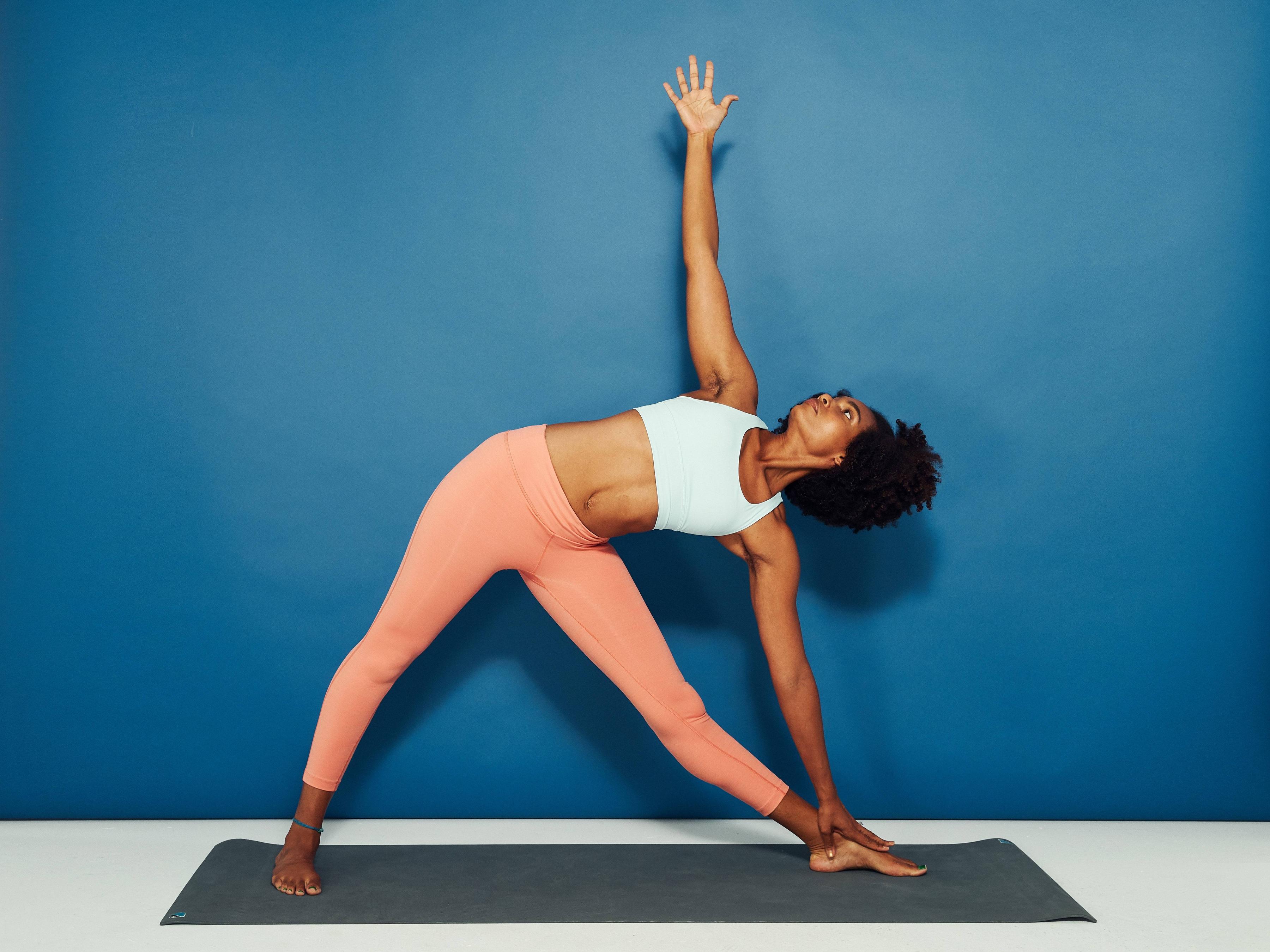
You may have heard of at-home yoga. There are many benefits. But, it is important to be aware that there are certain equipment and obstacles. You can learn more about how to practice yoga at your home. Below are the best spaces and equipment for yoga at your home. And keep these things in mind to make your home yoga session as enjoyable as possible. Keep reading to learn how you can avoid distractions during your home yoga session.
Yoga at home has many benefits
You can practice yoga at your home with many benefits. First, it allows you to be more present in your body's movements. This helps you tune into your body and develop intuition about the yoga poses. You don't have to rush through the poses. Instead, you'll have the time to relax, process your emotions and gain self-awareness. It is also very enjoyable! Yoga is a great way to relax and have fun.

Equipment required
While there are various types of yoga equipment, some of these items are not required. They can be useful if the equipment is needed to enhance your practice or to perform specific poses such aerial yoga. These cases allow you to buy yoga-specific clothing, equipment, and gear. Additionally, you might also be interested in yoga mats or blocks. Talk to your yoga teacher if you have any questions about what equipment you will need.
Space requirements
This place is ideal for anyone who wants to practice yoga at their home. It's both convenient and economical. Yoga is more than just about your body and breathing. It also involves energy and movement. It is important to have ample space for your yoga mat and other essential props so you can get the most from your home practice. A basement nook may be an option if you don’t have a designated space. This space should have enough width to accommodate the practitioner's height and arms. Inversions should be performed comfortably if there is enough room for a wall without furniture.
Distractions
Finding a private space for yoga at home is a challenge. You can make your space more conducive for yoga practice by keeping it away from any other responsibilities like cleaning or cooking. You can concentrate on your practice if your space is clean and well-organized. These are some ways to keep your yoga studio free from distractions:

Ideas for family yoga
There are many options for incorporating yoga into your family's lives. You can do silly poses with your partner, or focus on your breath together. Music can also be used to signify that your practice is special and separate from all other activities. You don't need to spend hours on your mat together. You can begin with the basics poses first and then work your way up. These are just a few tips to help your family get the most of their yoga time.
FAQ
Is 20 minutes a day of yoga enough?
Yoga should not only be considered an exercise activity, but a way to find your inner self. It is a time to look at your life and reflect on how it has changed.
My friend, who had been practicing yoga for many, years, introduced me to the benefits of yoga. He explained that he used to do yoga for 20 minutes every morning. This helped him feel more calm throughout the day.
I tried it and noticed a significant improvement in my overall wellbeing. Since then I have been practicing yoga on a regular basis and it has helped me to relax and stay focused when I work at my desk.
The key is finding what works best for you and setting realistic goals. Yoga doesn't have to be a time-consuming activity if it's not going to help your goals.
Can women do yoga?
Absolutely! Absolutely!
There are many different styles of yoga for men and women alike.
Can I take classes together?
This depends on the class. Some teachers offer private lessons only. Others offer classes for students who want to meet others in the class.
Some studios even offer small groups called "classes within a class," where you'll be paired with another person who shares similar interests and goals.
Statistics
- The people in the yoga group were 37 percent more likely to have quit smoking by the end of the 8-week program. (nccih.nih.gov)
- In comparison, a 125-pound person is estimated to burn 135 calories in 30 minutes of walking (at a pace of 15-minute miles) and 210 calories bicycling at a moderate pace on a stationary bike. (everydayhealth.com)
- A 2020 review of 27 studies (1,805 total participants) of yoga interventions in children or adolescents found reductions in anxiety or depression in 70 percent of the studies, with more promising results for anxiety. (nccih.nih.gov)
- Start your Fall off right with 20% off All Access Membership when you sign up by 9/25! (corepoweryoga.com)
- According to the Agency for Healthcare Research and Quality, falls are incredibly common among older adults in nursing facilities. Even the simplest ones can increase the risk of death (24). (healthline.com)
External Links
How To
Yoga is a good exercise?
Yoga isn’t just for those who want to lose weight. It can also help you achieve flexibility, balance, coordination and strength.
Yoga isn't just a form of exercise. These poses can help you to relax and calm down. They help us to improve our posture, concentration, and breathing.
Yogis are those who practice yoga. Yogis follow various forms of yoga, including Hatha, Ashtanga, Iyengar, Vinyasa, Bikram, Kundalini, Yin Yang, and Restorative.
There are many types and styles of yoga. But they all share similar goals. Each style focuses on different aspects. There are many yoga styles, including Hatha, pranayama and meditation.
These yoga moves don't require any equipment
-
Sun Salutation: This series of 12 postures begins with a forward bent, and then 10 additional poses.
-
Warrior pose - A warrior pose can be achieved by holding a stick/staff.
-
Triangle Pose - This pose involves lifting one leg behind you and bending at the knee.
-
Standing Forward Bend - This pose is performed by sitting on the floor with legs straight and then folding forward at the waist.
-
Seated Twist - This pose is performed while seated on a chair or mat.
-
Cobra Pose is a position where you lie on your side, with your arms in front.
-
Child's Pose: This is a pose where the child lies face down on the ground.
-
Cat/Cow Pose -- This pose is a mix of a cow pose and a cat pose. Your upper body should be lifted off the ground while you are lying down. Next, roll onto your back and place both of your hands under you shoulders.
-
Head Tilt: This is when you tilt your head back and keep your eyes closed.
-
Shoulder Stand: This is when you stand straight with your feet up and your arms extended above your head.
-
Tree Pose – This is a pose where you kneel on your knees and place your hands underneath your shoulders.
-
Bow Pose: This pose requires you to bend forward from the hips, and then place your palms on ground.
-
Corpse Pose -- This pose is for five minutes.
-
Mountain Pose - The mountain pose is where you stand tall while your spine is straight.
-
Legs up the Wall Pose – This pose involves hanging upside down from a wall.
-
Side Angle Pose- To achieve this pose, lean against a wall while putting your right elbow next to it.
-
Plank Position – When you are lying flat on your stomach, and your left arm and right leg extend apart from one another, this is called the plank position.
-
Bridge Pose – This is a pose where you balance on your elbows, and toes.
-
Reverse Table Top Position - You can achieve this pose by lying on your stomach and reaching towards the ceiling.
-
Handstand - This requires strength and balance. You can hold your body between two walls or a frame of a door to perform this pose.
-
Half Moon Pose is also known by the name Hero Pose. It involves standing on your hands with your toes.
-
Headstand (or handstand) - This position requires balance and strength. This pose is possible on a brick wall or on a doorframe.
-
Forearm Balance- This position is done with your forearms on a tabletop.
-
Spinal Twist - This pose lies on your belly while reaching your arms.
-
Supported Bound Angle Pose - This pose requires support and balance. For this pose, you will need to find something sturdy like a branch from a tree or an old beam to support you.
-
Wide Leg Forward Fold - This pose is achieved by spreading your legs apart and touching your toes.
-
Single Pigeon Pose – This pose is similar the the wide leg forward fold, but has only one limb extended.
-
Extended Puppy Dog Poses - This pose can be very relaxing. This can be done by stretching your legs straight out and bending at the knees.
-
Situated Forward Bend – This pose allows you to sit cross-legged while stretching your calves.
-
Crow Pose is a difficult pose that can be very rewarding once you have mastered it. The trick is to raise your arms higher than your head and lower them so that they touch the ground.